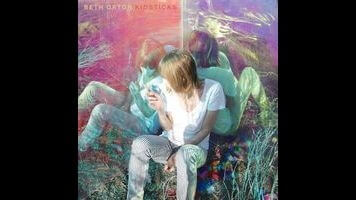Beth Orton makes a clean break from folktronica, with mixed results

After recording 2012’s folk-leaning Sugaring Season live in the studio with a full band, Beth Orton made a 180-degree creative pivot for her sixth solo album, Kidsticks. Instead of turning to acoustic guitar, the U.K. singer-songwriter first hunkered down in a garage and crafted keyboard loops with co-producer/Fuck Buttons co-founder Andrew Hung. Orton then spent the next 18 months building and sculpting Kidsticks’ songs by adding live musicians and her own production flourishes—the first time she’s delved into the latter arena—and mixing the music with David Wrench (Hot Chip, Caribou).
This painstaking process led to dense, layered electronic songs with far more rhythmic backbone than Sugaring Season. Opening track “Snow” leverages tribal rhythms (and a stitched-together, lattice-like lyrical delivery) to great effect, while the icy synthpop highlight “1973” smartly utilizes robotic new wave beats. “Corduroy Legs,” meanwhile, conjures early Four Tet, between its whimsical found sounds, twinkling piano runs, and muffled vocals. Better still is “Moon,” a song whose disparate parts—insistent motorik beats, dub-like bass, blocky electronic loops, and Orton’s breathy vocals—coalesce into something mesmerizing.
Yet despite these intriguing individual elements and strong foundation, Kidsticks can be unfocused. Songs such as “Dawnstar” and “Falling” feel plodding and cloistered, suffocated rather than liberated by their laborious genesis. The Cocteau Twins-reminiscent “Flesh And Blood” feels equally untethered by a loose arrangement with barely defined choruses and a meandering, conversational tone. The record is far more successful when Orton’s vocal performance possesses velocity. On “Wave,” she dips into her lower register to convey the anguish of desire, while her ethereal exhortations create a false sense of security on “Petals,” whose compressed electro-funk crescendos into chaotic, discordant white noise. In the end, Kidsticks’ raw material is sound, and Orton’s attention to detail is impressive. But this adventurous approach could use a bit more structure and cohesion next time around.